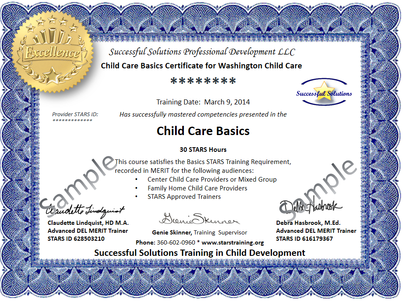How to Help a Child With Developmental Delay at Home

To help a child with developmental delay at home, engage in regular sensory activities and exercises. Create a structured routine to support their learning and development.
When a child experiences developmental delay, it can be challenging for both the child and the parents. However, with targeted support and activities at home, significant progress can be made. By implementing strategies that stimulate their senses and support their cognitive and physical development, parents can play a crucial role in helping their child reach their full potential.
We will explore effective ways to support a child with developmental delay at home, providing practical tips and activities that can make a meaningful difference in their progress. Whether it’s implementing sensory play, establishing a supportive routine, or incorporating educational activities, various approaches can contribute to a child’s development in the comfort of their home environment.
Understanding Developmental Delays
Brief Explanation Of Developmental Delays
Developmental delays refer to a child’s inability to reach milestones within the expected time frame. This can involve physical, cognitive, behavioral, or social domains. Children with developmental delays may progress at a slower rate than their peers, leading to challenges in everyday activities and interactions.
Categories Of Developmental Delays In Children
Developmental delays are commonly categorized into four main areas: motor skills, speech and language, cognitive skills, and social or emotional skills. Each category encompasses specific developmental milestones that children are expected to achieve at certain ages. Identifying the specific area of delay is crucial in tailoring intervention strategies to meet the child’s needs.
Significance Of Addressing Developmental Delays Early
Addressing developmental delays early can significantly impact a child’s long-term outcomes. Early intervention not only supports the child’s development but also improves their overall quality of life. By identifying and addressing delays at a young age, children are given the opportunity to reach their full potential, minimizing the potential impact of delays on their future abilities and independence.
When it comes to helping a child with developmental delays at home, it’s essential to have a clear understanding of the nature of their challenges. By recognizing the different categories of delays and the importance of early intervention, parents and caregivers can take proactive steps to provide necessary support for the child’s development.
Identifying Needs And Challenges
Identifying your child’s needs and challenges is crucial when it comes to supporting their development at home. By recognizing signs of delay, knowing when to consult a professional, and assessing the severity of the delays, you can effectively provide the necessary assistance to help your child thrive.
Recognizing Signs Of Delay In Your Child
If you notice persistent difficulties in various developmental areas such as speech, motor skills, or social interaction, it may indicate a potential developmental delay. Some red flags include limited vocabulary for their age, difficulty in maintaining eye contact, or weak muscle tone. These signs may indicate the need for further evaluation to identify and address any potential delays.
When To Consult A Professional
It’s important to consult a professional if you have concerns about your child’s development. Early intervention is key in addressing developmental delays. If you notice significant differences in your child’s development compared to their peers or find yourself frequently questioning their progress, seeking the guidance of a healthcare professional or a developmental specialist is imperative.
Assessing The Severity Of Developmental Delays
Evaluating the severity of your child’s developmental delays can aid in determining the type and level of support needed. Consider the impact of the delays on your child’s daily activities, social interactions, and academic performance. This assessment will help in customizing interventions and support strategies to best meet your child’s needs.
Creating A Supportive Home Environment
Creating a supportive home environment is crucial for helping a child with developmental delay. Your home plays a pivotal role in providing the necessary stimulus and support for the child’s growth and development. By designing a nurturing and safe space and establishing daily routines that encourage growth, you can create an environment that fosters the child’s overall well-being and development.
The Role Of A Stimulating Home In Development
A stimulating home environment is essential for a child with developmental delay. Engaging the child in various activities and providing a range of sensory experiences can enhance their cognitive, motor, and social skills. Through stimulating activities, the child’s learning and development can be fostered in the comfort of their home. It is essential to create a supportive environment that encourages the child to explore, discover, and learn at their own pace.
Designing A Nurturing And Safe Space
Designing a nurturing and safe space within the home is important for a child with developmental delay. Ensuring that the home environment is safe and free from hazards is vital to promote the child’s overall well-being. Creating designated areas for play, learning, and relaxation can foster a sense of security and comfort for the child. Incorporating sensory-friendly elements such as soft lighting, calming colors, and tactile materials can contribute to a supportive environment for the child.
Daily Routines That Encourage Growth
Establishing daily routines that encourage growth is essential for supporting a child with developmental delay. Incorporating activities that promote communication, physical exercise, and social interaction into the child’s daily schedule can contribute to their overall development. Additionally, providing opportunities for the child to engage in hands-on learning experiences and express themselves creatively can foster their cognitive and emotional growth.
Tailoring Effective Strategies
In order to effectively help a child with developmental delay at home, it is crucial to tailor strategies that are specifically suited to the individual needs and capabilities of the child. By personalizing activities for skill advancement, maintaining consistency, and exercising patience in daily practice, caregivers can create a supportive environment that fosters the child’s growth and development.
How To Help A Child With Developmental Delay At Home
When providing assistance to a child with developmental delay, it is essential to tailor strategies to best suit their unique abilities and requirements. Personalizing activities can significantly aid in advancing the child’s skills and promoting their overall development.
Personalizing Activities For Skill Advancement
One effective approach is to personalize activities according to the child’s interests, strengths, and areas needing improvement. By creating a tailored plan, caregivers can target specific areas of development while also keeping the child engaged and motivated. For instance, if a child enjoys building blocks, incorporating activities that involve spatial awareness and fine motor skills can be beneficial.
Furthermore, breaking down activities into smaller, achievable tasks can help the child build confidence and make progress. Providing individualized attention and support can make a substantial difference in addressing the child’s developmental needs.
Consistency And Patience In Daily Practice
Consistent engagement in daily activities is crucial for a child with developmental delay. Establishing a routine and maintaining regular practice sessions can contribute to the reinforcement of skills and concepts over time. Patience is key, as progress may be gradual, but consistent effort will yield positive results.
Integrating Play And Education
When dealing with a child experiencing developmental delay, integrating play and education at home can play a pivotal role in their progress. Making learning enjoyable and engaging can help stimulate their cognitive, physical, and social development in ways that traditional educational methods may struggle to achieve.
Play-based Learning Techniques
Play-based learning techniques provide children with hands-on experiences that promote exploration and creativity. By engaging in activities such as building blocks, pretend play, and sensory play, children can enhance their fine and gross motor skills while also improving their communication and social interaction abilities.
Educational Toys And Their Benefits
Educational toys are specially designed to encourage learning while entertaining children. Toys such as puzzles, shape sorters, and interactive books can help develop problem-solving skills, promote sensory awareness, and stimulate imagination. They serve as powerful tools in fostering growth and development in children with developmental delays.
Combining Fun With Developmental Goals
It’s crucial to ensure that the activities a child engages in at home are not only enjoyable but also align with their developmental goals. By integrating play and education, parents and caregivers can turn ordinary daily tasks into opportunities for learning. For instance, cooking together can help children improve their language skills, numerical understanding, and sensory perception, all while having fun.
Fostering Social And Emotional Skills
Fostering social and emotional skills in children with developmental delays is crucial for their overall growth and well-being. While professional therapies play a significant role, parents and caregivers can also make a substantial impact by creating a supportive environment at home. Emphasizing social interaction, nurturing emotional intelligence, and engaging in practical exercises are fundamental aspects of fostering these skills.
Emphasis On Social Interaction At Home
Encouraging social interaction within the family and with peers is vital for children with developmental delays. Creating opportunities for playdates, family gatherings, and group activities promotes social skills development while also providing a platform for fostering friendships and meaningful connections. Structured activities that encourage teamwork and communication, such as board games or collaborative art projects, are effective in honing these skills.
Emotional Intelligence Through Family Bonding
Building emotional intelligence starts with the family environment. Open and empathetic communication, regular expressions of love and support, and consistent validation of feelings create a nurturing atmosphere that allows children to develop a healthy emotional understanding. Engaging in activities that foster a sense of belonging and connectedness within the family, such as shared meal times, storytelling sessions, and family outings, contributes significantly to emotional intelligence development.
Practical Exercises For Better Social Adaptability
Practical exercises tailored to enhance social adaptability can be seamlessly integrated into daily routines. Role-play scenarios that simulate real-life social situations, practicing active listening and turn-taking, and participating in structured group activities are effective means of building social skills and adaptability. Providing consistent positive reinforcement and encouragement when the child exhibits improved social behaviors further strengthens their progress.
Encouraging Communication And Language
Enhancing Verbal And Nonverbal Communication
Enhancing verbal and nonverbal communication is crucial for children with developmental delays. Encourage the use of simple words and phrases in daily activities, and actively listen to the child’s attempts at communication. Use visual cues such as gestures and pictures to aid understanding and expression. This can help bridge the gap between language delays and effective communication.
Tools And Resources To Aid Language Development
There are numerous tools and resources available to aid language development for children with developmental delays. Utilize storybooks, flashcards, and interactive apps focused on vocabulary and speech. Encourage the child to engage in activities that promote language development, such as singing songs, engaging in pretend play, and verbalizing their experiences. Consider assistive communication devices and speech therapy sessions to provide additional support.
The Parent-child Communication Dynamic
Parents play a pivotal role in fostering effective communication with their children. Create a supportive environment that allows the child to express themselves comfortably. Be patient and attentive during interactions, and show enthusiasm for their attempts at communication. Engage in regular conversations, and model clear and simple speech patterns to aid the child’s understanding.
Reinforcing Progress And Milestones
When helping a child with developmental delay at home, reinforcing progress and celebrating milestones is crucial. By effectively celebrating small victories, tracking and documenting developmental improvements, and maintaining motivation and a positive outlook, parents and caregivers can provide essential support for their child’s development.
Celebrating Small Victories Effectively
One of the most powerful ways to reinforce progress is to celebrate each small victory. This could be as simple as praising your child for making eye contact or mastering a new skill. By celebrating these achievements, you can instill a sense of accomplishment and boost your child’s confidence. Make sure to validate their effort and progress consistently to foster a positive learning environment.
Tracking And Documenting Developmental Improvements
Keeping track of your child’s developmental improvements is vital for monitoring their progress. Consider maintaining a journal or using a development tracking app to record milestones, breakthroughs, and setbacks. This documentation can also be helpful when working with healthcare professionals as it provides a detailed history of your child’s development journey. By having a clear record of improvements, you can also identify patterns and adjust your approach as necessary.
Maintaining Motivation And A Positive Outlook
It’s essential to maintain motivation and a positive outlook throughout your child’s developmental journey. This involves fostering a supportive and encouraging environment, setting realistic expectations, and staying patient. By focusing on the progress made and acknowledging the efforts put in, you can keep the motivation levels high for both yourself and your child. Remind yourself that progress takes time and that each step forward, no matter how small, is a significant achievement.
Frequently Asked Questions On How To Help A Child With Developmental Delay At Home
What Are The Common Signs Of Developmental Delay?
Developmental delay signs may include speech and motor skill delays, difficulty with social interactions, and trouble focusing. A child may also exhibit delayed cognitive, emotional, or physical development. It’s important to consult a pediatrician for professional assessment and guidance.
How Can Parents Support A Child With Developmental Delay At Home?
Parents can support their children by creating a structured routine, engaging in stimulating activities, and providing a nurturing environment. Additionally, seeking specialized therapy and educational resources, such as speech and occupational therapy, can be beneficial in addressing specific areas of delay.
What Are Some Effective Activities To Enhance A Child’s Development At Home?
Activities like reading together, playing educational games, and engaging in sensory experiences can stimulate a child’s development. Incorporating music, art, and physical activities into daily routines can also promote various aspects of overall growth and skill-building for the child.
Conclusion
Incorporating consistent activities can aid in a child’s development and growth. By making simple changes to everyday routines, you can support their progress and well-being. Remember, patience and encouragement go a long way in helping a child with developmental delay thrive at home.
Keep up the positive work!

With over 20 years of experience in early childhood education, Jane brings a wealth of knowledge to Classroom Journey. She specializes in play-based learning and has a passion for inclusive education.






